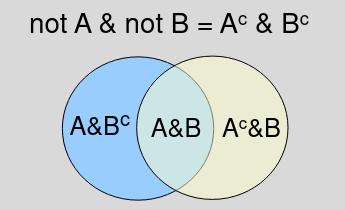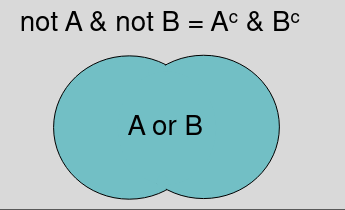Module 2: Probability
Probability is the study of uncertainty and randomness in the world. It measures chance.
Proportion is a summary statistic. Proportion measures size (i.e. how many patients have optional blood pressure).
- We show the probability of Event A as P(A)
- The compliment of an event, or chance of event not occurring is AC
- P(A) + P(AC) = 1
- Two events are mutually exclusive (or "disjoint") if when one event occurs the other cannot
- Joint Probability = P(A & B) = P(A,B) = P(A ꓵ B)
- P(A or B) = P(A U B)
- When A and B are non-mutually exclusive P(A or B) = P(A) + P(B) - P(A & B)
- When A and B are mutually exclusive events P(A or B) = P(A) + P(B) since P(A&B)=0
- Conditional probability is the chance of an event occurring given that another event occurred, writen as P(A|B) = The probability of A given B.
- P(A|B) = P(A&B)/P(B)
- P(A|B) * P(B) = P(A&B)
Bayes' Theorem
Because P(A & B) = P(B & A),
P(A & B) = P(B & A) = P(B|A) × P(A)
=
P(A|B) × P(B) = P(B|A) × P(A)
P(B|A) = P(A|B) * P(B) / P(A)
Sensitivity and Conditional Probabilities
Sensitivity of a screening test = Probability of positive test given the person has the disease, this can be expressed as P(X = +| Y = +) = the probability of a disease given the test was positive.
P(X=+ | Y=-) = False Positive
P(X=- | Y=+) = False negative


